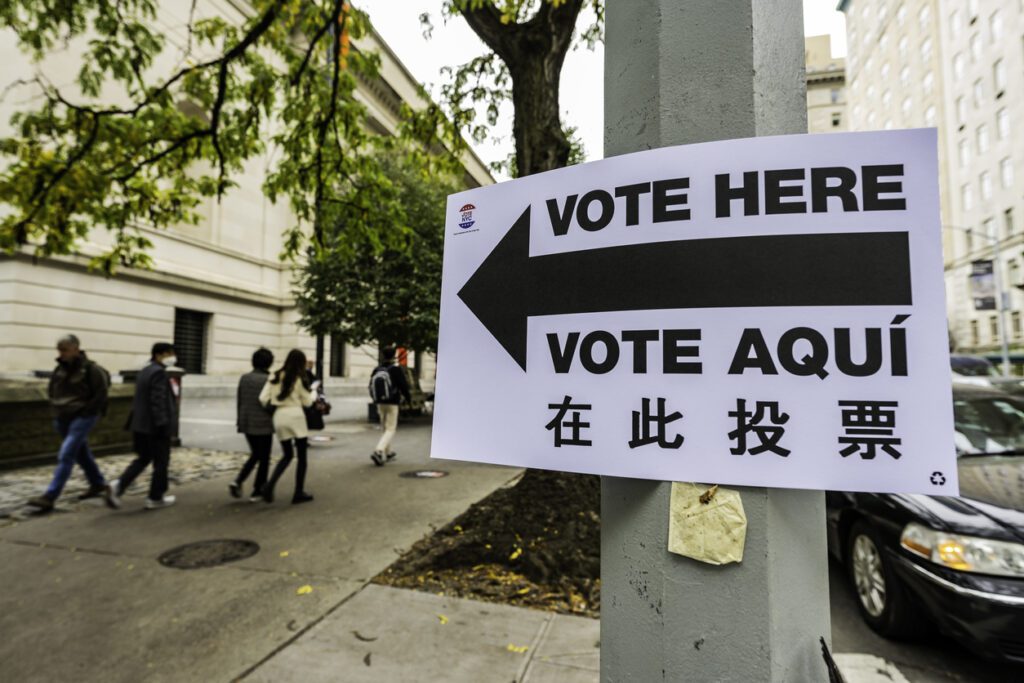GOP Has More Persuading to Do When It Comes to Early Voting
Rethinking Strategy: GOP faces challenges in boosting early voter turnout amid shifts in voter confidence and election dynamics. Discover inside tactics from Virginia to Pennsylvania as Republicans push to adapt before the polls close.

Image Credit: Christine McCann
Low-turnout elections such as midterms and off-year races were once thought to be easier contests for Republicans because of their more reliable base voters. Results from Virginia and elsewhere on Tuesday continue to undermine that conventional wisdom and show that Republican strategy around early voting still isn’t hitting the mark.
Republican candidates are now battling against the seeds of concern about early, absentee and vote-by-mail planted by President Trump in the lead up to November 2020. In fact, going into Election Day this year, Republican practitioners from DC and on the ground in states like Virginia and Pennsylvania were focused on what they considered a “persuasion” campaign to get their voters to the polls early.
The goal of these programs was to get people to believe in the early-vote process or think of mail-in voting as safe and secure. The bottom line, practitioners told C&E ahead of Tuesday’s results, was that they wanted their voters to buy into the process — and to go out and do it.
To wit, Virginia Gov. Glenn Youngkin and his team were behind a highly publicized program called Secure Your Vote Virginia, which was an election integrity-slash-early-voting initiative.
The Republican State Leadership Committee (RSLC) also put a huge emphasis on that, in addition to channeling resources to down-ballot contests where Democratic candidates had healthy budgets. Part of that financial push also came from the RNC, which was working from a historical metric that close to 90 percent of races won in 2022 were won by the party that spent the most money in that race.
GOP strategists in DC told C&E before the vote they were happy with their candidates’ fundraising, despite ongoing issues raising small-dollar contributions. For instance, some competitive state Senate Republican candidates raised more than $5 million for their 2023 campaigns.
Despite the investment, Virginia’s early-vote turnout was down significantly — even though voters had, for the first time, a 45-day window to cast their ballots.
Early voting saw a 20-percent decrease from the general election in 2021, although the state’s governorship was up that year. But digging into the data, Republicans may be able to point to a slight uptick in their early-voting numbers. Non-partisan data vendor L2 had 280,805 modeled Republican voters voting early (34.7% of the total early turnout) versus 327,392 or 34.2% in 2021. But that wasn’t enough to prevent a Democratic takeover of the General Assembly.
Meanwhile in Pennsylvania, there was also an emphasis on early voting by Republicans because, in some counties there, they mail out ballots 50 days before election. There’s also the potential in Pennsylvania that if you request and vote by absentee ballot this year, the voter can get on their annual list and not have to re-register.
That was part of the right’s voter education push as was education around in-person absentee voting, which can be done before the election. To put the Republicans’ voter-education campaign into context, some GOP strategists who spoke to C&E on background recalled how even old-time party activists didn’t know they could actually physically go down to a location and cast a ballot in person before Election Day in the Keystone State. That state’s competitive Supreme Court race went decidedly for Democrat Daniel McCaffery.
